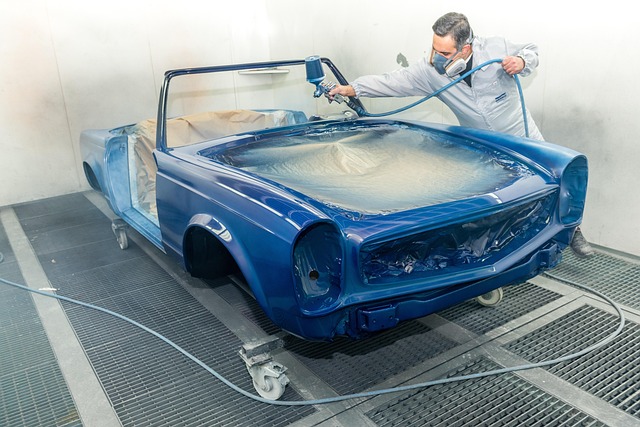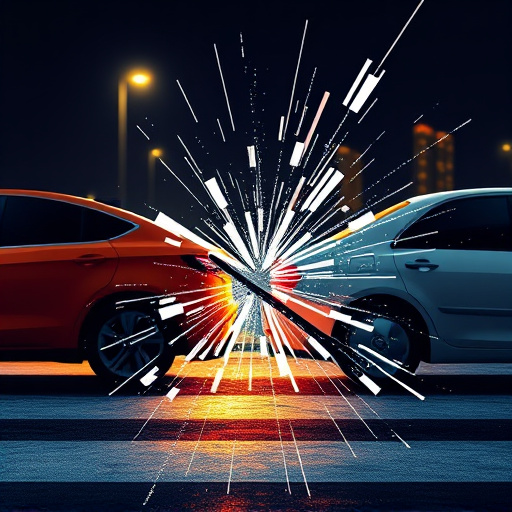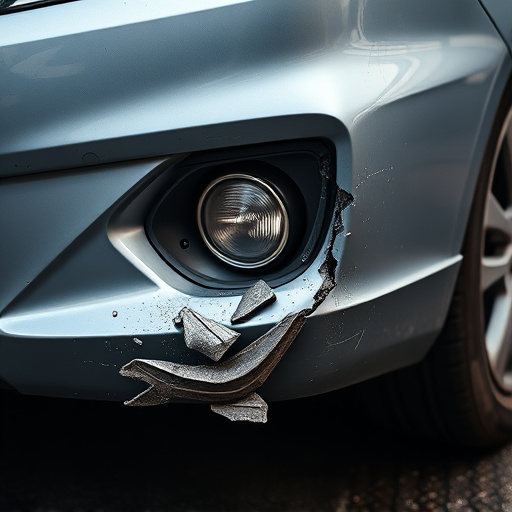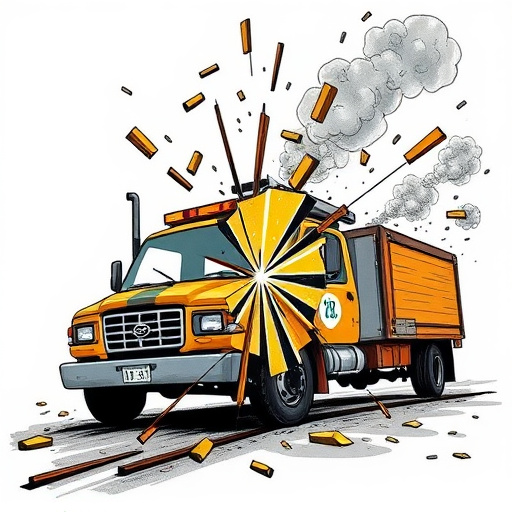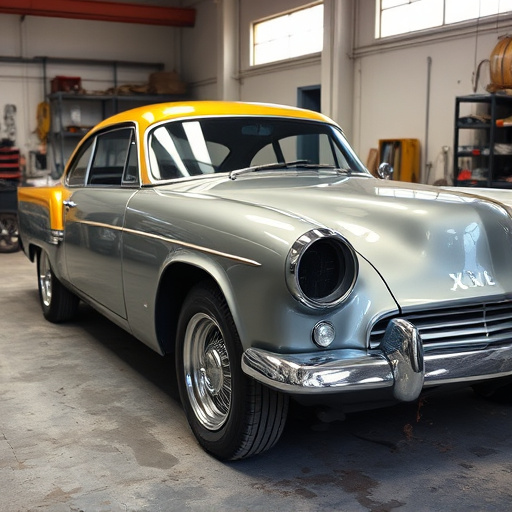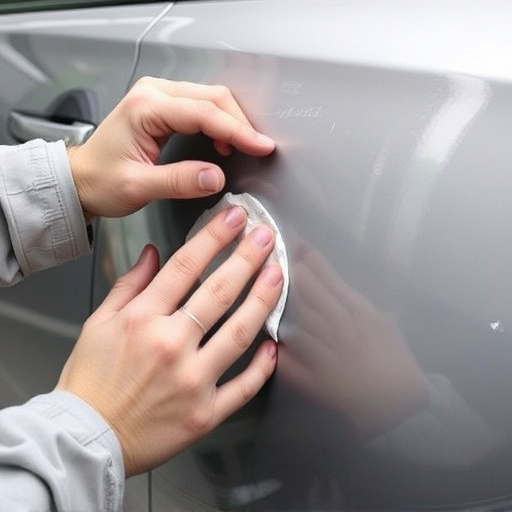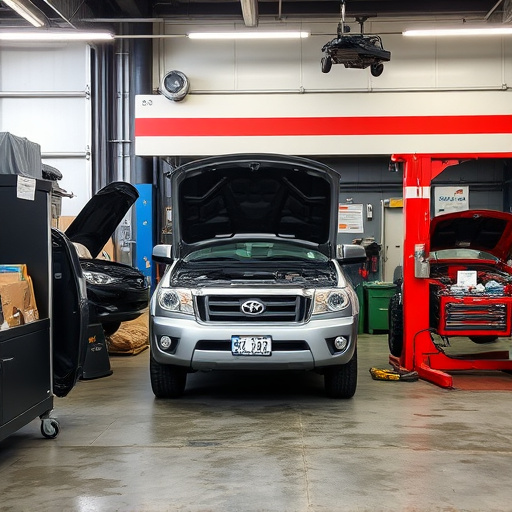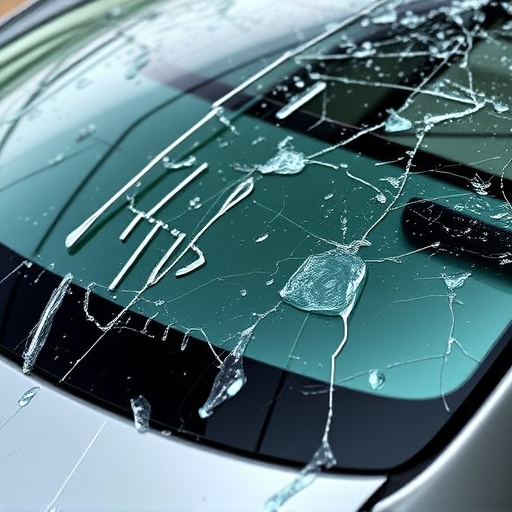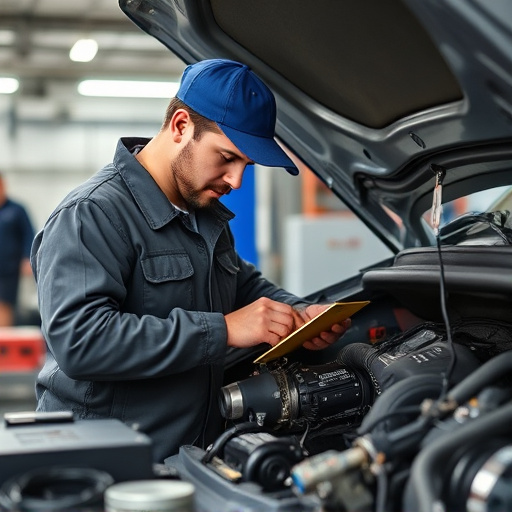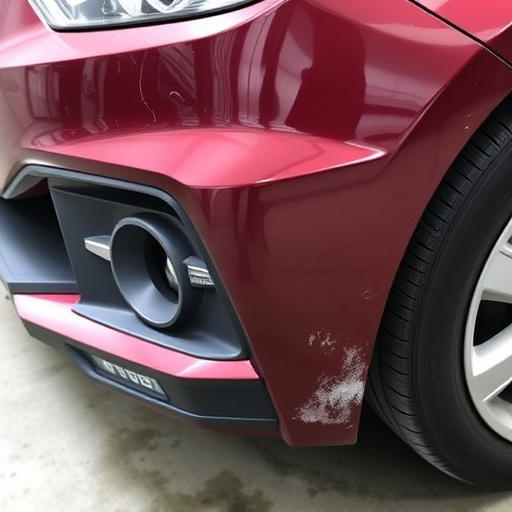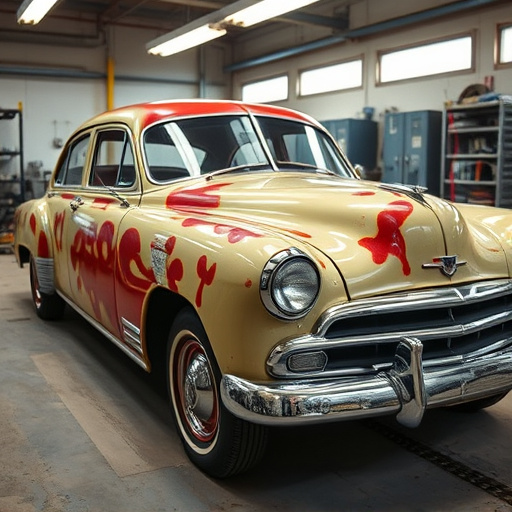Rocker panel replacement is crucial for Mercedes Benz collision repair, addressing damage from accidents and debris. Skilled technicians use specialized tools for precise removal and auto painting, ensuring aesthetic integration. Efficient workflows, including paintless dent repair, enhance operational speed and customer satisfaction while reducing costs. This process is a powerful marketing tool for repair shops, drawing in customers who value both quality and swift service.
Rocker panel replacements have become a common task in auto repair shops, driven by increasing vehicle design complexity and road hazards. This article explores the significant impact of this specific repair on shop efficiency. We’ll delve into understanding common rocker panel damage, streamlining the replacement process with a step-by-step guide, and uncovering post-replacement benefits that optimize repair workflows. By implementing efficient practices for rocker panel replacements, shops can enhance productivity and customer satisfaction.
- Understanding Rocker Panel Damage and Its Impact
- Efficient Replacement Processes: Step-by-Step Guide
- Streamlining Repair Workflow: Post-Replacement Benefits
Understanding Rocker Panel Damage and Its Impact

Rocker panels, the trim that runs along a vehicle’s side, often bear the brunt of impact during accidents or road debris damage. This can lead to noticeable dents, scratches, and even cracks, which not only affect the car’s aesthetics but also its structural integrity. Understanding the extent of rocker panel damage is crucial for repair shops as it dictates the course of action, from simple dent repair to complex auto painting and body work.
In many cases, minor damage can be addressed with precise dent repair techniques, ensuring the panel is restored to its original shape without compromising the car’s overall appearance. However, severe cases might require complete rocker panel replacement, involving meticulous removal, measurement, and installation of new panels. This process significantly impacts repair shop efficiency, requiring skilled technicians and specialized tools for both the removal and auto painting stages.
Efficient Replacement Processes: Step-by-Step Guide

Efficient replacement processes for rocker panels are a cornerstone of any reputable mercedes benz collision repair or car body restoration shop. The step-by-step guide below ensures precision and speed, benefiting both the workshop and its customers.
First, the old panel is carefully removed, taking note of its placement and any attached components. This involves detaching hardware like brackets and bolts while preserving nearby panels and structural integrity. Once the old rocker panel is out, the new one is aligned precisely, ensuring a perfect fit. Before installation, inspect for any imperfections or damage to the surrounding body. After proper positioning, reattach all hardware securely, following the reverse process of removal. Finally, a thorough inspection post-replacement confirms the panel’s stability and aligns with the vehicle’s overall aesthetic, signifying a job well done in the collision repair center.
Streamlining Repair Workflow: Post-Replacement Benefits

Post-rocker panel replacement, repair shops experience a significant boost in operational efficiency. The streamlined workflow allows technicians to focus on other tasks while ensuring faster turnaround times for customers. This new process often incorporates paintless dent repair techniques, which have proven to be a game-changer in the automotive repair industry. By eliminating the need for traditional repainting and sanding methods, car paint services can be completed more swiftly, reducing overall labor costs and enhancing the shop’s productivity.
Additionally, the improved aesthetics of the vehicle following the rocker panel replacement can attract more customers seeking top-quality repairs. This increased efficiency not only benefits the repair shop by maximizing resources but also ensures customer satisfaction through faster service and enhanced car appearance.
Rocker panel replacement is a significant process that can greatly enhance repair shop efficiency. By understanding common damage types and implementing streamlined replacement procedures, shops can reduce downtime, minimize material waste, and improve overall productivity. This not only benefits the shop’s bottom line but also ensures better customer satisfaction through faster turnaround times. Embracing efficient rocker panel replacement practices is a key step towards modernizing automotive repair workflows.
